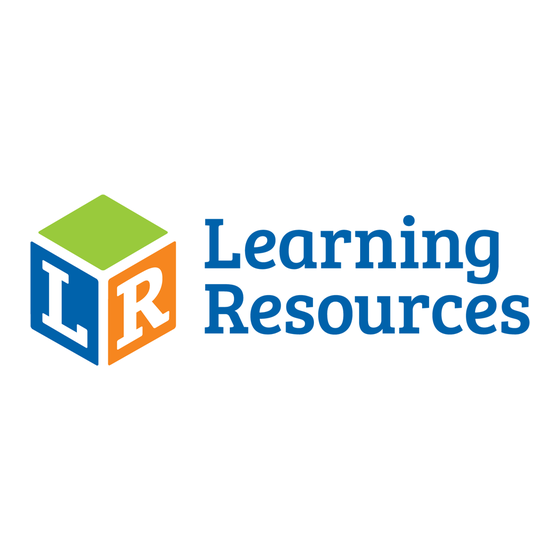Advertisement
Quick Links
Advertisement

Subscribe to Our Youtube Channel
Summary of Contents for Learning Resources Pumping Heart Model
- Page 1 LER 3535 Ages Grades Activity Guide...
- Page 2 The Pumping Heart Model helps students visualize blood flow through the heart and into the lungs for oxygenation. The model’s reverse side displays a summary of how the heart works. Use the model along with the reproducible pages in this guide to reinforce anatomical structure and key vocabulary.
- Page 3 Removing Water from the System Caution: – Drain water from the model before storing for long periods – Draining the system will require a small Phillips screwdriver – Drain the water in a sink or bucket; avoid contact with clothing to prevent staining 1.
- Page 4 Pumping Heart Model The Pumping Heart Model is a very simplistic representation of the human heart and its four chambers. Your actual heart does not have air bubbles in its veins, arteries, or chambers. Blood does not pool in the bottom of healthy lungs. Your brain tells your heart to beat automatically. In reality, your heart is much more complex than the Pumping Heart Model could ever demonstrate.
- Page 5 Like many models of the heart and blood vessels, the Pumping Heart Model uses the color blue to represent blood that is poor in oxygen. • Adults have about 4–6 liters of blood in their bodies, depending on body size.
- Page 6 About the Lungs • Oxygen gives all the cells in our body energy. Lungs help our body take in oxygen and also get rid of carbon dioxide, a gas that our body does not use. • When you inhale, you breathe in air to fill your lungs. When you exhale, you breathe air out of your lungs.
- Page 7 Heart Study Guide = oxygen-rich blood = oxygen-poor blood Aorta (to body) Left ventricle Pulmonary arteries (to lungs) Right ventricle Left atrium Tricuspid valve Pulmonary veins (from lungs) Right atrium Mitral valve Veins (from body)
- Page 8 Heart Quiz © Learning Resources, Inc., Vernon Hills, IL, US Learning Resources Ltd., Bergen Way, King's Lynn, Norfolk, PE30 2JG, UK Please retain our address for future reference. Your opinion matters! Visit Made in China. LRM3535-GUD www.LearningResources.com Fabriqué en Chine.




Need help?
Do you have a question about the Pumping Heart Model and is the answer not in the manual?
Questions and answers